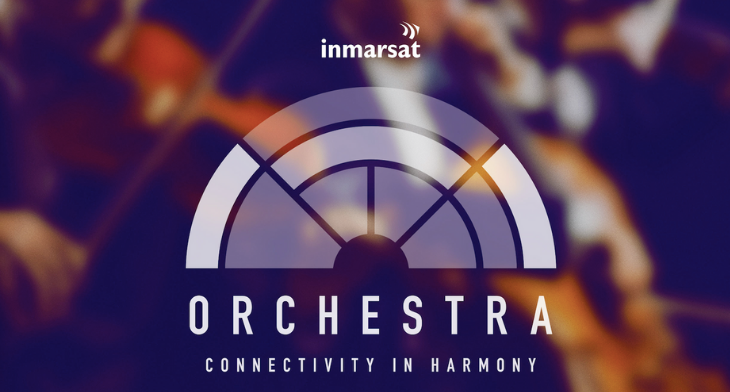
Inmarsat has released plans for ORCHESTRA, its version of the communications network of the future.
Inmarsat ORCHESTRA will seamlessly integrate existing geosynchronous (GEO) satellites with low earth orbit satellites (LEO) and terrestrial 5G into an integrated, high-performance solution.
The new approach means that Inmarsat can easily boost capacity in high-density areas such as ports and airports, ensuring customer needs continue to be met well into the future with capacity scaled directly to match their requirements. The initial five-year (2021-2026) total investment for ORCHESTRA is expected to be in the order of US$100 million.
“An orchestra brings different instruments together, each supporting the other and playing its role in the masterpiece. We’re building ORCHESTRA on the same concept,” said Rajeev Suri, CEO of Inmarsat. “By combining the distinct qualities of GEO, LEO and 5G into a single network, we will deliver a service that is far greater than the sum of its parts. Our customers will benefit from dramatically expanded high throughput services around the world. This is the future of connectivity and Inmarsat is perfectly positioned to bring it to the world with its proven technology expertise, right base of customers and partners, and financial strength.”
Inmarsat’s existing GEO satellites, both GX and L-band, will continue to provide global coverage, high performance, security and resilience. Terrestrial 5G adds ultra-high capacity in busy ‘hot spots’, such as ports, airports, and sea canals. A small constellation of LEO satellites will layer additional high capacity over further high-demand areas such as oceanic flight corridors. As a result, the network will offer the highest capacity for mobility users worldwide, and at ‘hot spots’.
“ORCHESTRA ensures Inmarsat is well positioned to deliver long-term, profitable growth by delivering new services to existing customers, targeting near-adjacent market segments, and maintaining a strong competitive position,” said Suri. “We have a record of adopting the right technology at the right time. We plan to focus initially on delivering the ORCHESTRA terrestrial network, while preparing for a future LEO constellation in the range of 150-175 satellites. This is a highly cost-effective approach that leverages Inmarsat’s leading GEO satellite networks as part of ORCHESTRA’s unique multi-layer architecture.”





